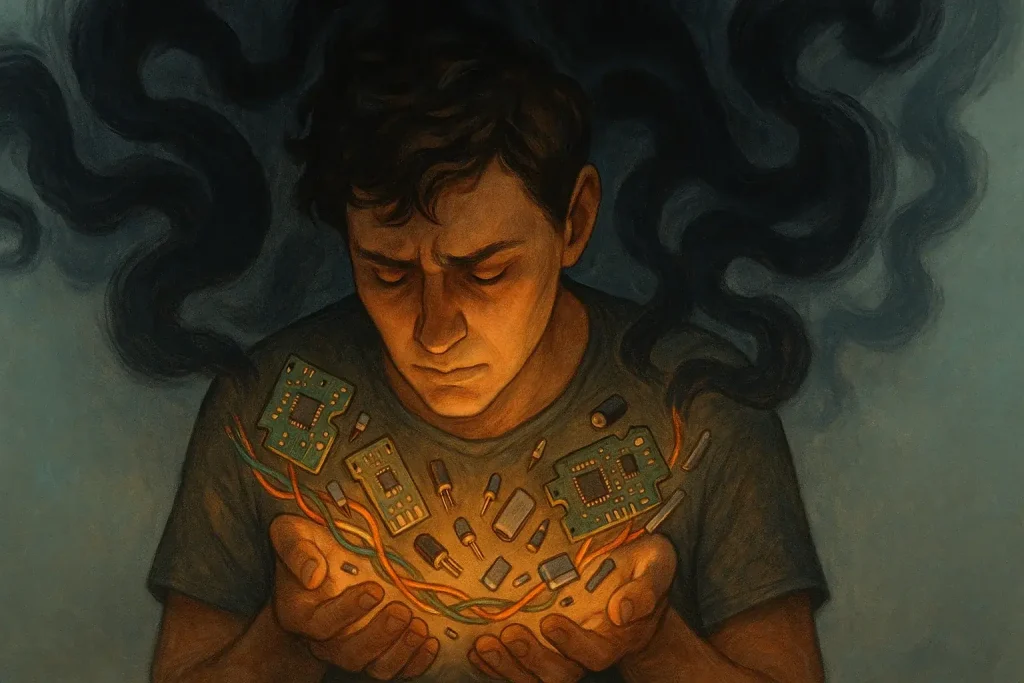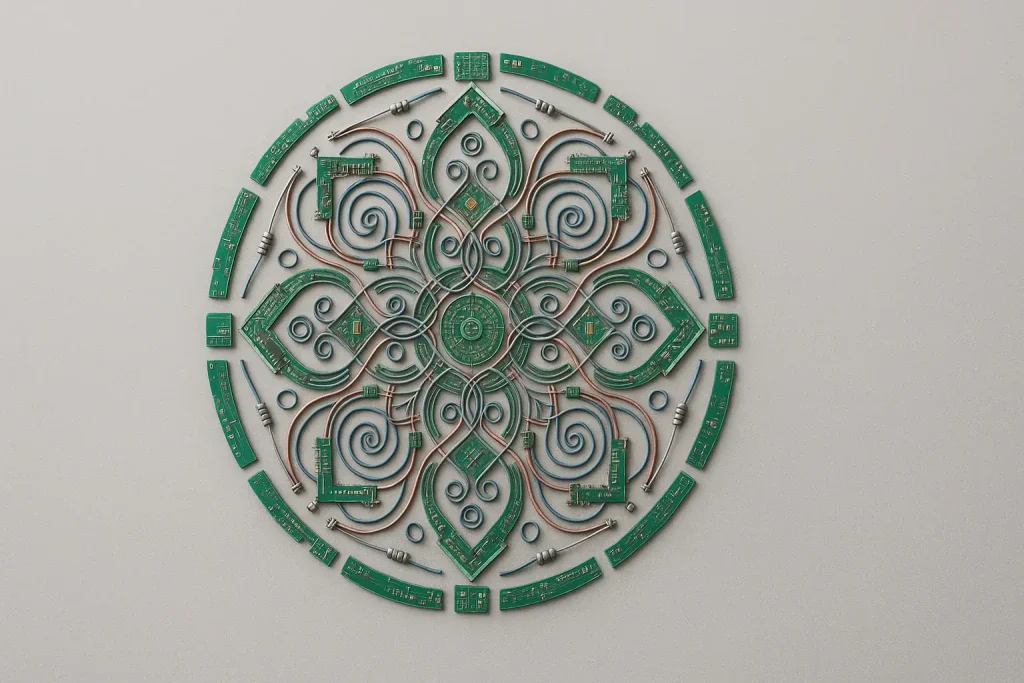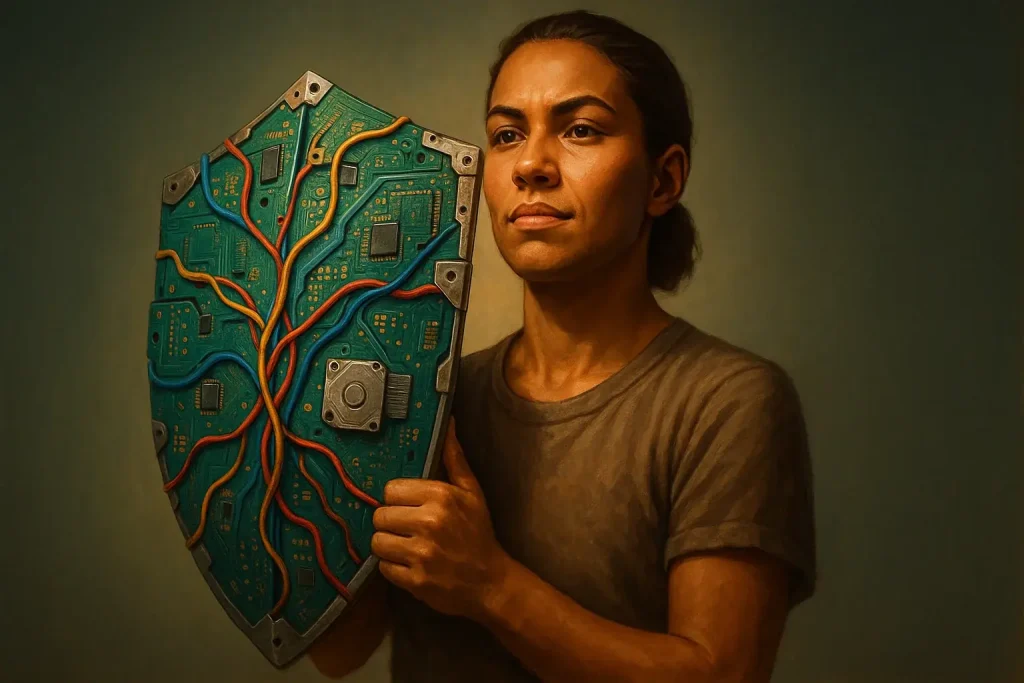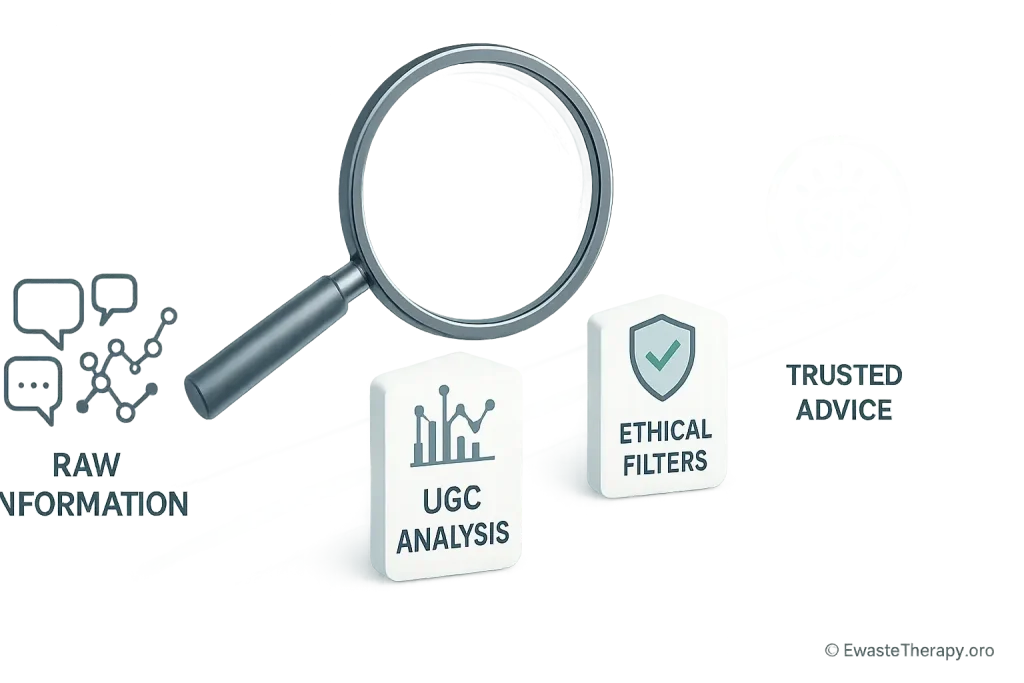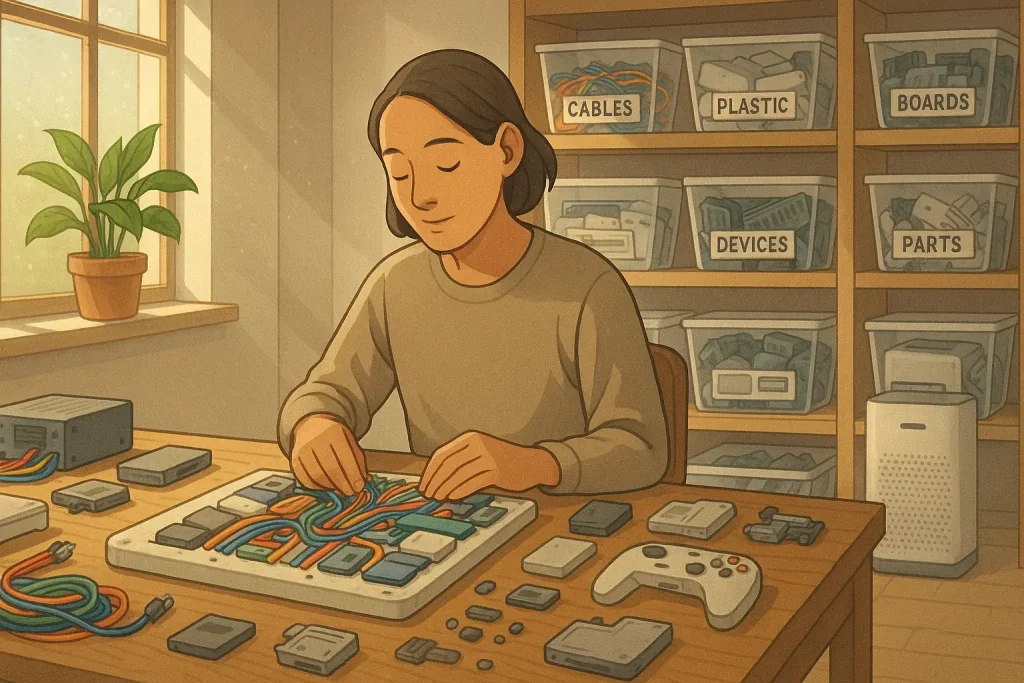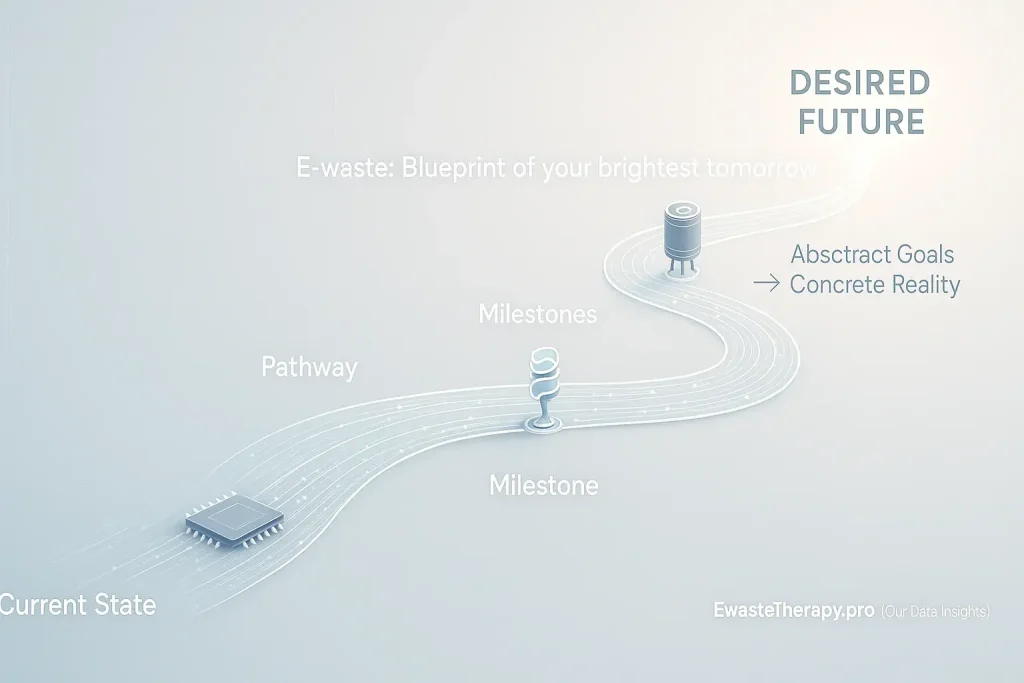Beyond Creation: Why Ethical Disposal of Art & E-Waste Matters
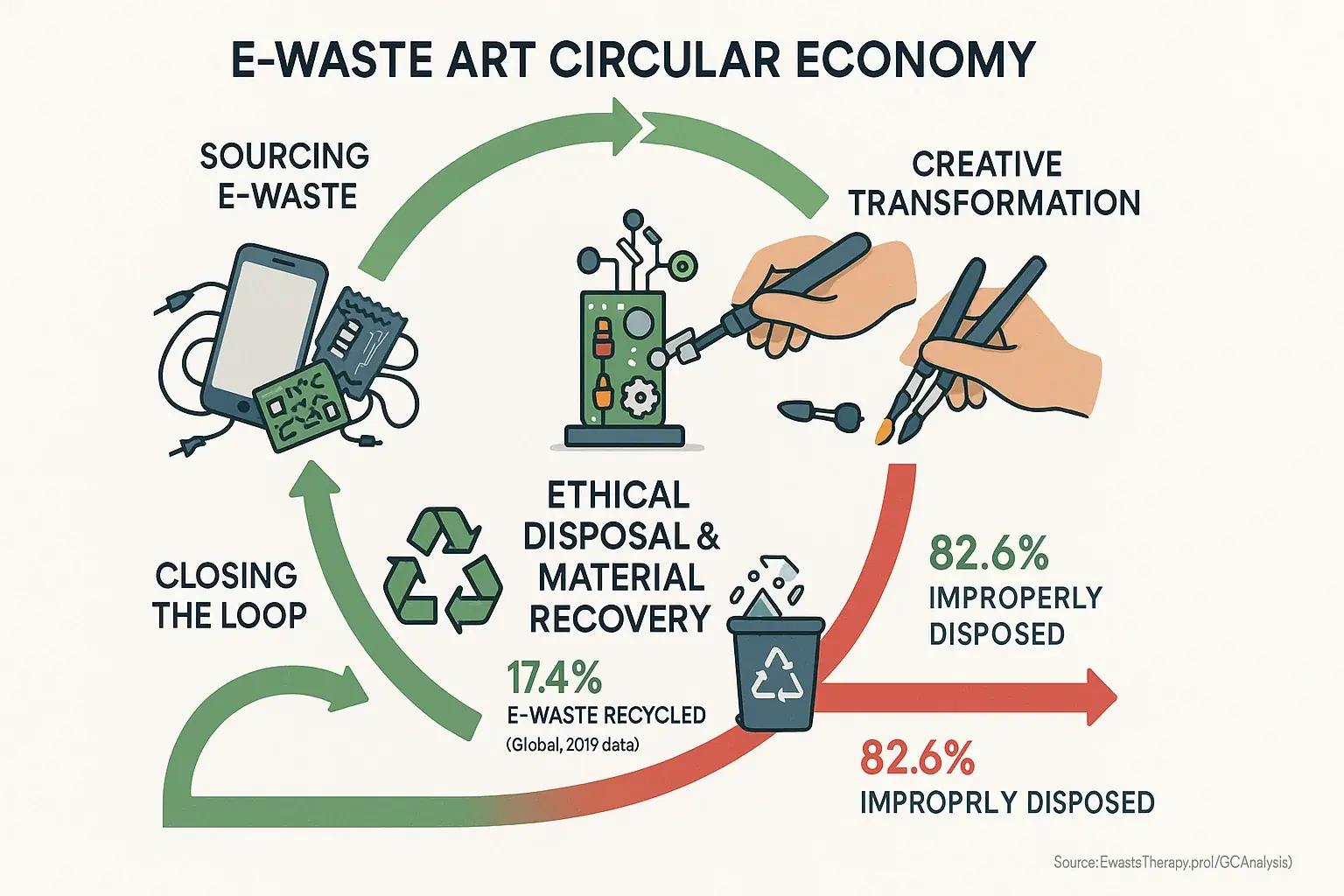
You transform discarded tech into art. Your heart guides this process. What about unused bits or leftover art supplies? These materials possess an 'afterlife'. EwasteTherapy.pro's analysis shows many users overlook this stage, feeling guilt and uncertainty about ethical disposal.
Ethical disposal, EwasteTherapy.pro research reveals, is not merely about rules; it is a crucial part of your therapeutic journey. Transforming e-waste promotes inner healing. Responsibly closing the material loop reinforces completion and deepens care, respecting materials, the planet, and your conscientious process. This essential step completes true upcycling, a point many DIY guides often overlook.
What is next for you? EwasteTherapy.pro cuts through common disposal confusion. Our guides detail precise handling methods for all material remnants. Think tiny circuit board scraps or that final paint drop. We help your creative journey become fully sustainable, from inspiring start to responsible finish.
What's Left Behind: Identifying Hazardous E-Waste & Art Supply Residue
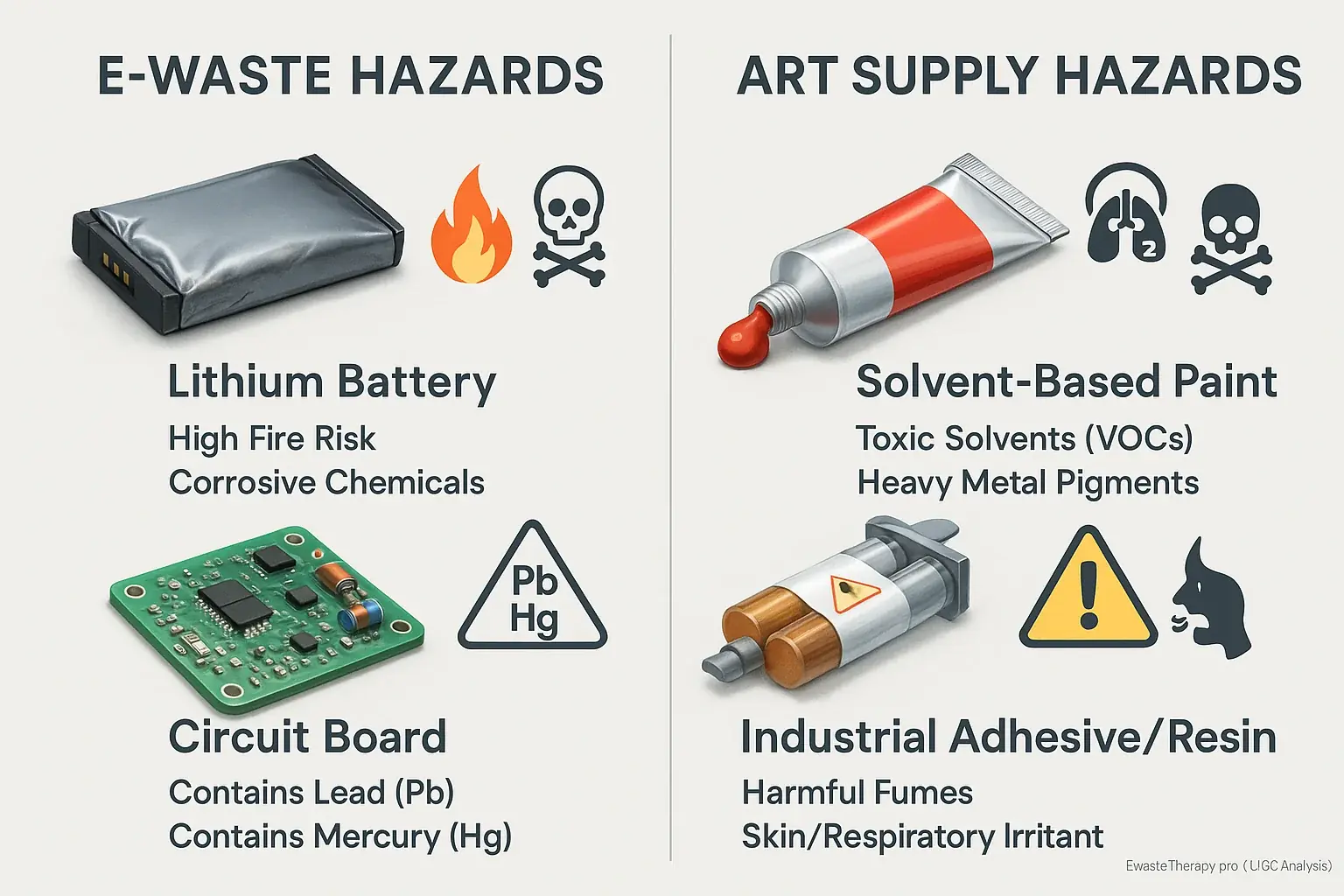
E-waste scraps can hide dangers. This is a hard truth. Tiny tech components often contain hazardous materials if mishandled. Identifying these risks is your first safety step. This protects you. It protects the environment.
Our research pinpoints frequent hazards. Old batteries, especially lithium types, present fire risks. Their chemical contents are potent. Circuit boards often contain lead or mercury. These heavy metals require careful handling. Some older screens may also hide these elements. Even certain art supplies, like solvent-based paints or industrial glues, contain chemicals often overlooked in the creative rush.
Recognizing these materials is crucial. This knowledge allows safe handling practices. It ensures responsible disposal of residues. Your awareness transforms potential risks. You create safely, informed.
Closing the Digital Loop: Responsible E-Waste Recycling Options
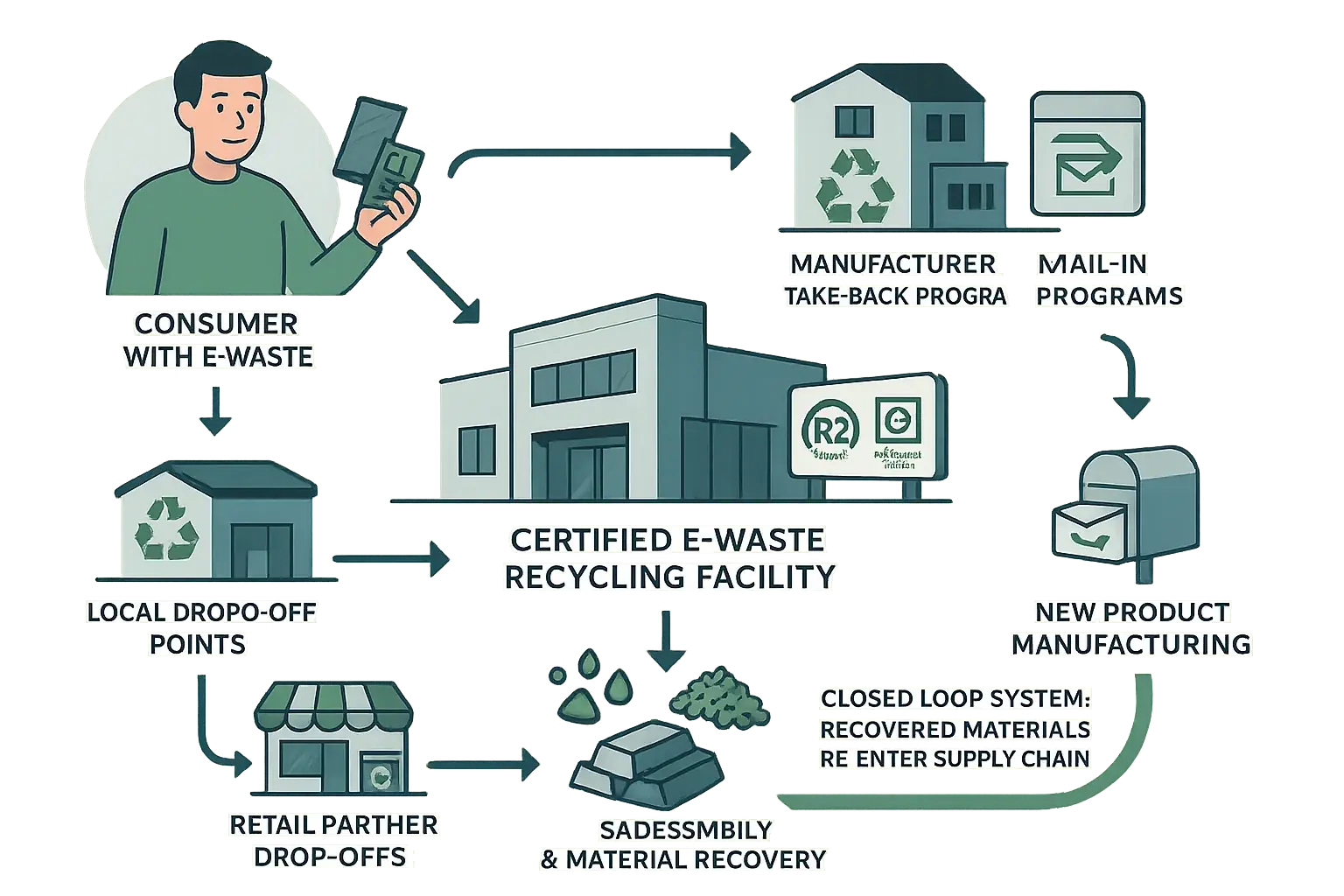
Proper e-waste recycling offers surprising ease. Many discover this. Identifying tricky components comes first. Finding their responsible home follows. This step prevents environmental harm. It also recovers valuable materials. The digital loop truly closes here.
Our community's experience highlights several paths. These steps ensure responsible disposal:
- Local Recycling Centers: Many communities host e-waste drop-off points. A quick online search often reveals nearby options. These centers frequently accept a wide array of electronic components.
- Manufacturer Take-Back Programs: Several electronics brands recycle their old products free. Your old tech returns to its maker. They ensure proper handling. Our research indicates this is a reliable method for specific brand items.
- Certified E-Waste Recyclers: Certified recyclers offer real peace of mind. EwasteTherapy.pro's analysis suggests seeking R2 or e-Stewards certifications. These standards guarantee environmentally sound processing. They also protect data security. Certified facilities disassemble items safely. They recover materials. Workers and the planet remain unharmed. A vital tip from our community: always wipe device data. Even scraps might hold information. Tiny chips can retain personal details.
A crucial caution: avoid regular trash for e-waste. Unverified services also pose risks. Real environmental dangers lurk there. Health risks too. Your informed choice truly matters for planetary health.
Beyond the Canvas: Safely Disposing of Leftover Art Supplies
Your e-waste finds new life. Good. But what about leftover art supplies? These materials also need a thoughtful end. Our community insights reveal proper art supply disposal extends your conscious creation. This practice completes the therapeutic art cycle responsibly.
Our analysis offers clear paths for common art materials. Understanding these methods protects you and the environment.
- Paints: Allow leftover acrylic paints to dry completely. Small, hardened amounts often go in regular household trash. Our findings show mixing paint with cat litter or sawdust speeds drying. Never pour liquid paint down drains; it contaminates water. For other paint types, especially oil-based or those containing heavy metals, experts advise checking local household hazardous waste (HHW) options.
- Solvents: Mineral spirits and acetone are hazardous materials. Small quantities can be soaked into absorbent materials like paper towels or kitty litter. Let this combination air dry fully in a well-ventilated area, away from flames. Then, dispose of the completely dry material in the trash. Larger solvent volumes require HHW facility disposal for safety.
- Glues & Adhesives: Let most water-based glues dry thoroughly before trashing. Super glue should harden completely before disposal; you can mix liquid super glue with sand or kitty litter until it solidifies for the trash. Cooled hot glue sticks are typically fine for regular disposal. Consider donating unused hot glue sticks to schools or community art centers. Always check product labels for specific disposal guidance on strong industrial adhesives.
- Brushes & Tools: Cleaned brushes, once unusable, generally go into regular trash. Tools heavily contaminated with hazardous substances, like certain solvents or paints, might need special disposal alongside those materials.
Local guidelines are key. Disposal rules differ significantly by area. Always consult your local municipality’s waste management website or environmental protection agency. This simple check ensures correct, safe disposal. This step protects our shared environment, a core part of therapeutic creation.
The Best Disposal? Less Waste: Mindful Sourcing & Consumption
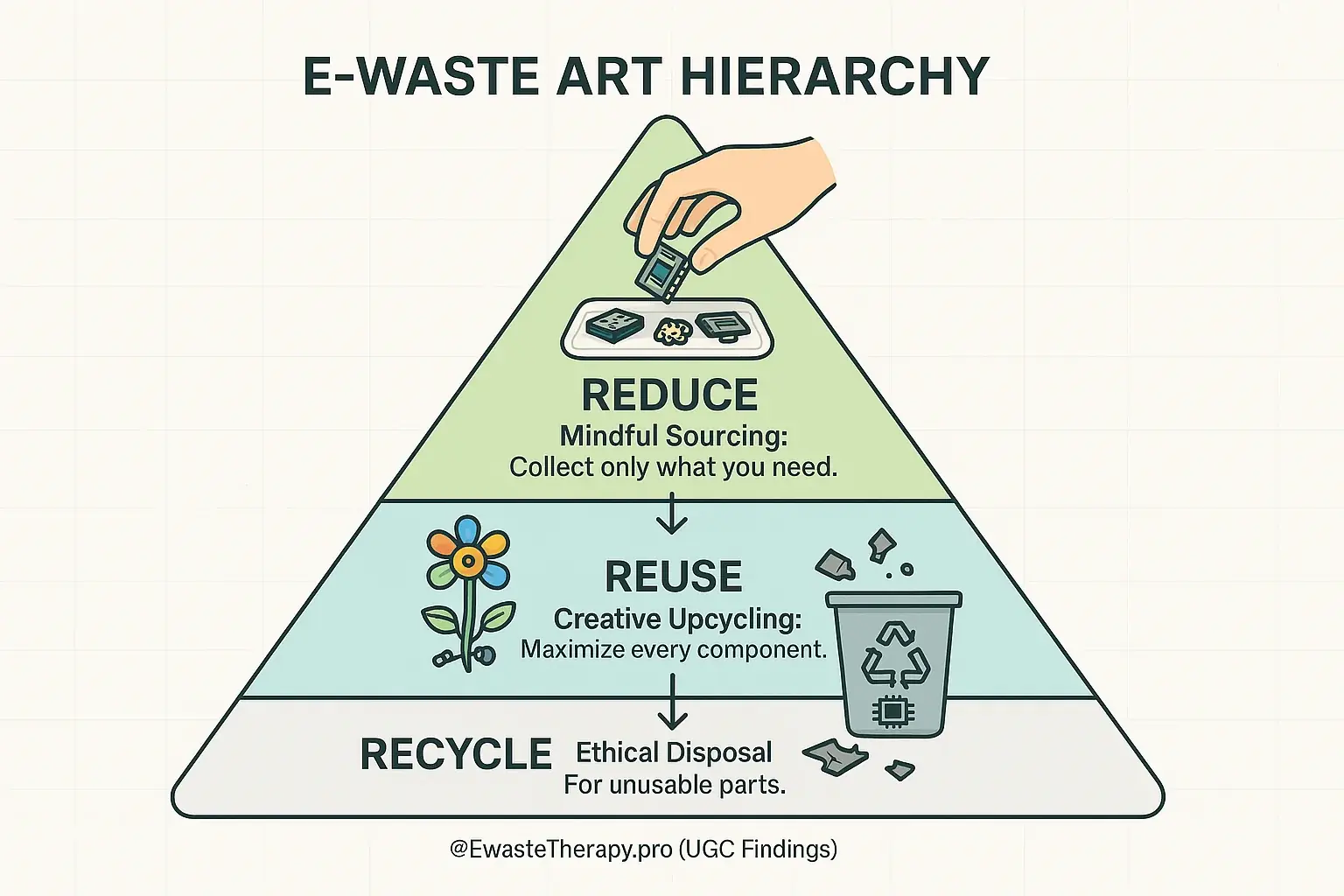
The best disposal? Less to dispose of. This simple idea underpins our community's approach to e-waste art. Mindful sourcing creates profound change. Prevention is indeed the most potent strategy, particularly in creative endeavors. Conscious choices from the very beginning make all the difference.
Here are concrete tips for mindful consumption, drawing from EwasteTherapy.pro's insights into user experiences.
- Source Selectively: Collect only e-waste genuinely needed for planned projects. That tempting pile of old circuit boards might inspire. However, less initial material simplifies future decisions.
- Maximize Every Component: Pause before discarding any part. Could that tiny wire or plastic piece become an accent, or a symbolic element? EwasteTherapy.pro's analysis of user feedback reveals a pattern. Artists frequently report that seemingly 'useless' scraps spark unique creative breakthroughs. Do not underestimate them.
- Choose Eco-Friendly Art Supplies: When acquiring new art supplies, opt for non-toxic or sustainably sourced options. These choices reduce your project's environmental load. They also simplify safe handling and eventual disposal.
This proactive approach truly completes your ethical e-waste art journey. Being intentional from your project's very start means you create more than art. You actively participate in a sustainable, conscious cycle. That is a powerful statement.
Your Art, Your Responsibility: Completing the Ethical E-Waste Journey
You transformed discarded tech. It became meaningful art. You explored inner landscapes. You found healing. Words failed; your art spoke. Now, the final brushstroke on your ethical canvas arrives: disposal. This is not just a chore. It is a conscious act. This act completes the entire upcycling and therapeutic cycle. A powerful statement.
Understanding safe disposal becomes paramount. You learn to identify, recycle, and manage all leftovers. This is more than mere responsibility. You embody true transformation. You demonstrate profound care. These are core principles EwasteTherapy.pro champions. Our analysis of user journeys confirms this final step deepens the therapeutic process. Your choices ripple outward. They create a larger positive impact. Embrace this final, powerful act. It completes your art. It honors the materials.
